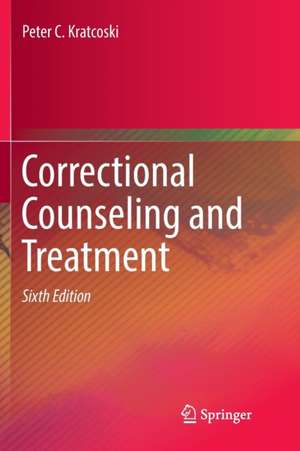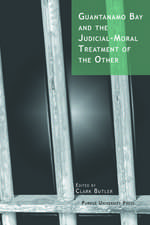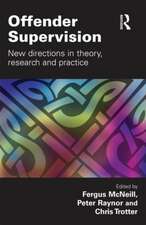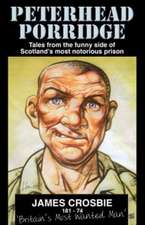Correctional Counseling and Treatment
Autor Peter C. Kratcoskien Limba Engleză Paperback – 28 iul 2018
The sections in the book provide:
- Aims and Scope of Correctional Counseling and Treatment
-Tools that Corrections Workers Use (including counseling and case management)
- Behavioral Modification Treatments: Examples and Applications
- Cognitive Therapies: Examples and Applications
Throughout the text, there is an emphasis on the big picture: the interaction of the correctional component of the justice system with other components, particularly courts (including special courts like family courts, drug courts, veterans courts and other programs).
Chapters in this book address the diverse population of correctional facilities, including juvenile offenders; those with mental illness, addiction and substance abuse problems, physical and mental disabilities; and homeless populations. The author also provides analysis of how legislation influences the corrections process.
This work is also enhanced by providing comparative analysis of the criminal and juvenile justice systems: their goals, objectives, and how these can affect counseling and treatment available within these two systems.
This pedagogical features of this engaging text include: excerpted interviews with correctional practitioners about the problems and challenges they encounter, discussion questions, classification instruments and real-world examples of specific treatments programs, and case studies that give students the chance to select the appropriate interviewing, counseling or treatment approach to deal with the problem/ issues of the case.
This work provides students with an overview of the methods usedfor Correctional Treatment and Counseling, and the tools to begin to think critically about how and when to apply these methods.
| Toate formatele și edițiile | Preț | Express |
|---|---|---|
| Paperback (1) | 490.25 lei 43-57 zile | |
| Springer International Publishing – 28 iul 2018 | 490.25 lei 43-57 zile | |
| Hardback (2) | 568.55 lei 22-36 zile | +27.15 lei 5-11 zile |
| Springer International Publishing – 17 mai 2017 | 568.55 lei 22-36 zile | +27.15 lei 5-11 zile |
| Springer Nature Switzerland – 7 feb 2024 | 651.34 lei 43-57 zile |
Preț: 490.25 lei
Nou
Puncte Express: 735
Preț estimativ în valută:
93.83€ • 97.70$ • 79.29£
93.83€ • 97.70$ • 79.29£
Carte tipărită la comandă
Livrare economică 10-24 martie
Preluare comenzi: 021 569.72.76
Specificații
ISBN-13: 9783319853758
ISBN-10: 3319853759
Ilustrații: XXIII, 314 p. 4 illus.
Dimensiuni: 155 x 235 mm
Greutate: 0.48 kg
Ediția:Softcover reprint of the original 6th ed. 2017
Editura: Springer International Publishing
Colecția Springer
Locul publicării:Cham, Switzerland
ISBN-10: 3319853759
Ilustrații: XXIII, 314 p. 4 illus.
Dimensiuni: 155 x 235 mm
Greutate: 0.48 kg
Ediția:Softcover reprint of the original 6th ed. 2017
Editura: Springer International Publishing
Colecția Springer
Locul publicării:Cham, Switzerland
Cuprins
Section I: Correctional Counseling and Treatment: Past and Present.- Chapter 1: The Scope and Purpose of Correctional Treatment.- Chapter 2: Applying Restorative Justice Models in the Correctional Process.- Chapter 3: The Criminal Justice System in Transition: Assisting Victims of Crime.- Section II: The Diverse Roles of Counselors in Correctional Treatment.- Chapter 4: Continuity and Change in the Roles of Correctional Personnel.- Chapter 5: Treatment of Juvenile Offenders: Diversion and Formal Processing.- Chapter 6: Diverting Special Categories of Offenders to Community Treatment Programs.- Chapters 7: The Functions of Classification and Assessment Models in Correctional Treatment.- Chapter 8: Community Based Sanctions: Probation and Post Release Supervision.- Chapter 9: Community Residential Treatment and Institutional Treatment.- Section III: Treatment Models Used in Corrections.- Chapter 10: The Interview: A Basic Tool Used in Correctional Counseling and Treatment.- Chapter 11: Behavior Modification Programs in Corrections.- Chapter 12: Group Counseling in Corrections.- Chapter 13: Brief Therapy and Crisis Intervention.- Chapter 14: Cognitive Behavioral Therapies in Correctional Treatment.- Chapter 15: Future Perspectives on Counseling and Treatment of Criminal and Delinquent Offenders.
Recenzii
“This book discusses treatment modalities that are used in correctional settings both community and institutional. … This book is well written by experts in the field, and addresses both children and adults. It explores the major treatment modalities in corrections today. Students will benefit greatly from this book.” (Gary B. Kaniuk, Doody’s Book Reviews, September, 2017)
Notă biografică
Peter C. Kratcoski earned a PhD in sociology from the Pennsylvania State University, University Park, Pennsylvania, a MA in sociology from the University of Notre Dame, Notre Dame, Indiana, and a BA in sociology from King’s College, Wilkes-Barre, Pennsylvania. He was selected for several post-doctoral grants by the National Science Foundation. He taught at the College of St. Thomas, St Paul, Minnesota and at the Pennsylvania State University before assuming the position of assistant professor of sociology at Kent State University in 1969. He retired as professor of criminal justice studies and chairman of the Department of Criminal Justice Studies at Kent State in 1997, where he is currently a professor emeritus and adjunct professor. He has published many books, chapters in books, and journal articles in the areas of juvenile delinquency, juvenile justice, international policing, crime prevention, corrections and victimology. His most recent writing and research has centered on juvenile justice, collaborative policing, correctional counseling, financial crimes, corruption and fraud and victimization of the elderly.
Textul de pe ultima copertă
This book provides a comprehensive overview of the methods used in the Criminal Justice system in the United States to counsel and treat offenders. It is aimed at advanced undergraduate and early graduate-level students for courses in Correctional Treatment or Rehabilitation, or Community Corrections more broadly.
The sections in the book provide:
· Aims and Scope of Correctional Counseling and Treatment
· Tools that Corrections Workers Use (including counseling and case management)
· Behavioral Modification Treatments: Examples and Applications
· Cognitive Therapies: Examples and Applications
Throughout the text, there is an emphasis on the big picture: the interaction of the correctional component of the justice system with other components, particularly courts (including special courts like family courts, drug courts, veterans courts and other programs). Chapters in this book address the diverse population of correctional facilities, including juvenile offenders; those with mental illness, addiction and substance abuse problems, physical and mental disabilities; and homeless populations. The author also provides analysis of how legislation influences the corrections process.
This work is also enhanced by providing comparative analysis of the criminal and juvenile justice systems: their goals, objectives, and how these can affect counseling and treatment available within these two systems.
The pedagogical features of this engaging text include excerpted interviews with correctional practitioners about the problems and challenges they encounter, discussion questions, classification of institutions, current examples of specific treatment programs, and case studies that give students the chance to select the appropriate interviewing, counseling, and treatment approaches to deal with the problems, and stresses of applying these methods. Several chapters are co-authored by correctional practitioners.
This work provides students with an overview of the methods used for Correctional Treatment and Counseling, and the tools to begin to think critically about how and when to apply these methods.
The sections in the book provide:
· Aims and Scope of Correctional Counseling and Treatment
· Tools that Corrections Workers Use (including counseling and case management)
· Behavioral Modification Treatments: Examples and Applications
· Cognitive Therapies: Examples and Applications
Throughout the text, there is an emphasis on the big picture: the interaction of the correctional component of the justice system with other components, particularly courts (including special courts like family courts, drug courts, veterans courts and other programs). Chapters in this book address the diverse population of correctional facilities, including juvenile offenders; those with mental illness, addiction and substance abuse problems, physical and mental disabilities; and homeless populations. The author also provides analysis of how legislation influences the corrections process.
This work is also enhanced by providing comparative analysis of the criminal and juvenile justice systems: their goals, objectives, and how these can affect counseling and treatment available within these two systems.
The pedagogical features of this engaging text include excerpted interviews with correctional practitioners about the problems and challenges they encounter, discussion questions, classification of institutions, current examples of specific treatment programs, and case studies that give students the chance to select the appropriate interviewing, counseling, and treatment approaches to deal with the problems, and stresses of applying these methods. Several chapters are co-authored by correctional practitioners.
This work provides students with an overview of the methods used for Correctional Treatment and Counseling, and the tools to begin to think critically about how and when to apply these methods.
Caracteristici
Provides a comprehensive overview of the aims and scope of correctional counseling and treatment Combines detailed descriptions with practical applications Includes behavior modification treatments, cognitive therapies, and other tools that corrections workers use Covers institutional and community corrections












